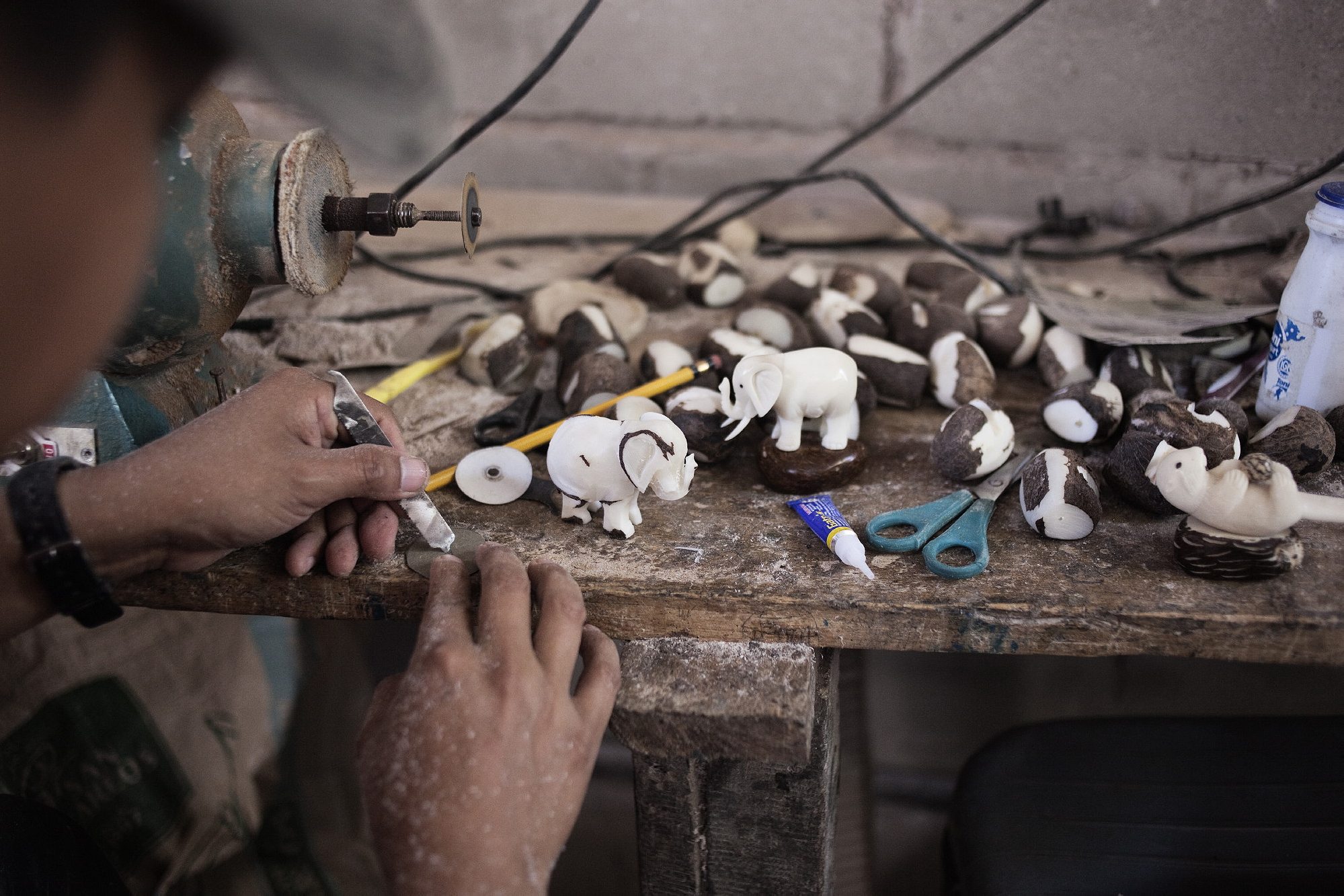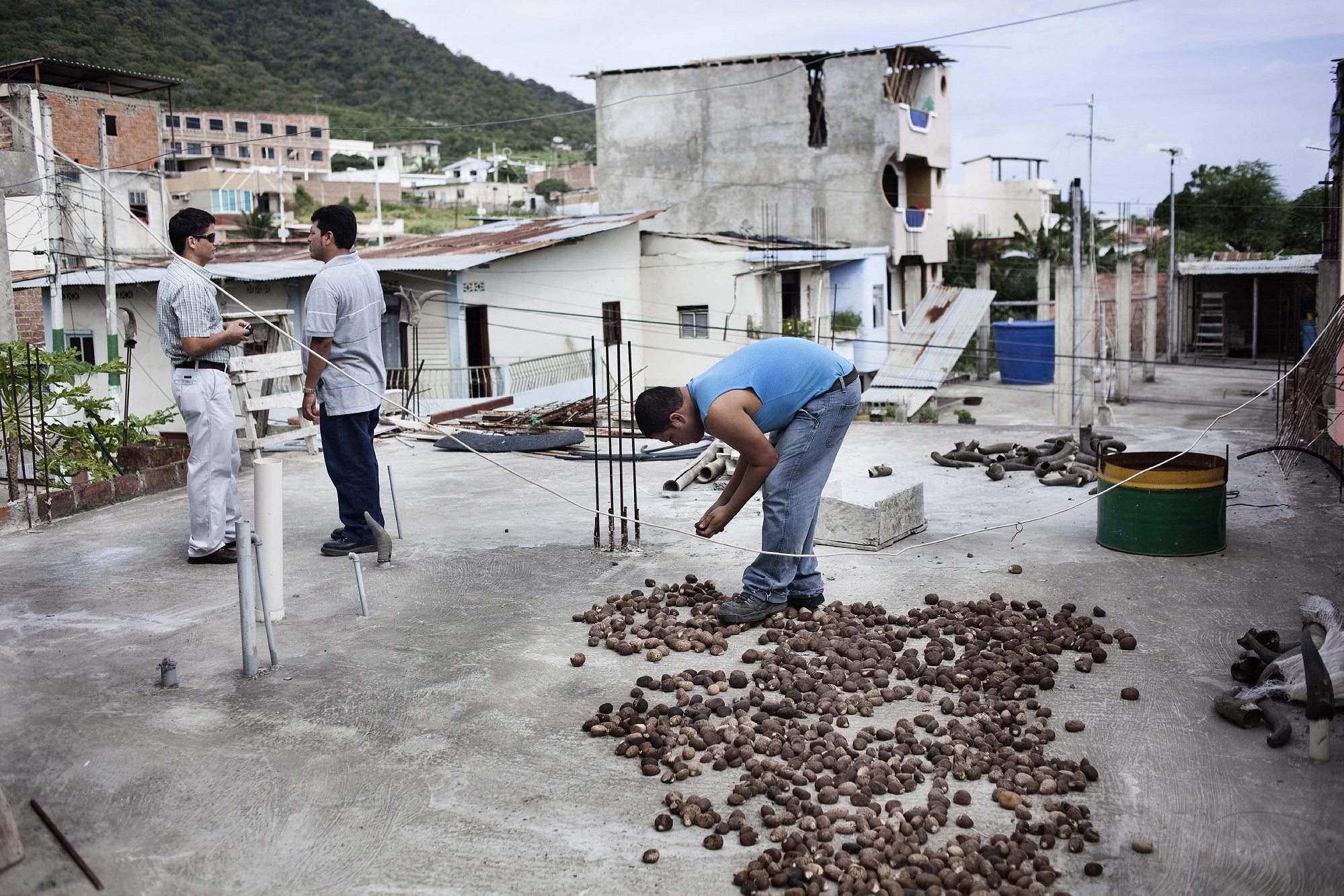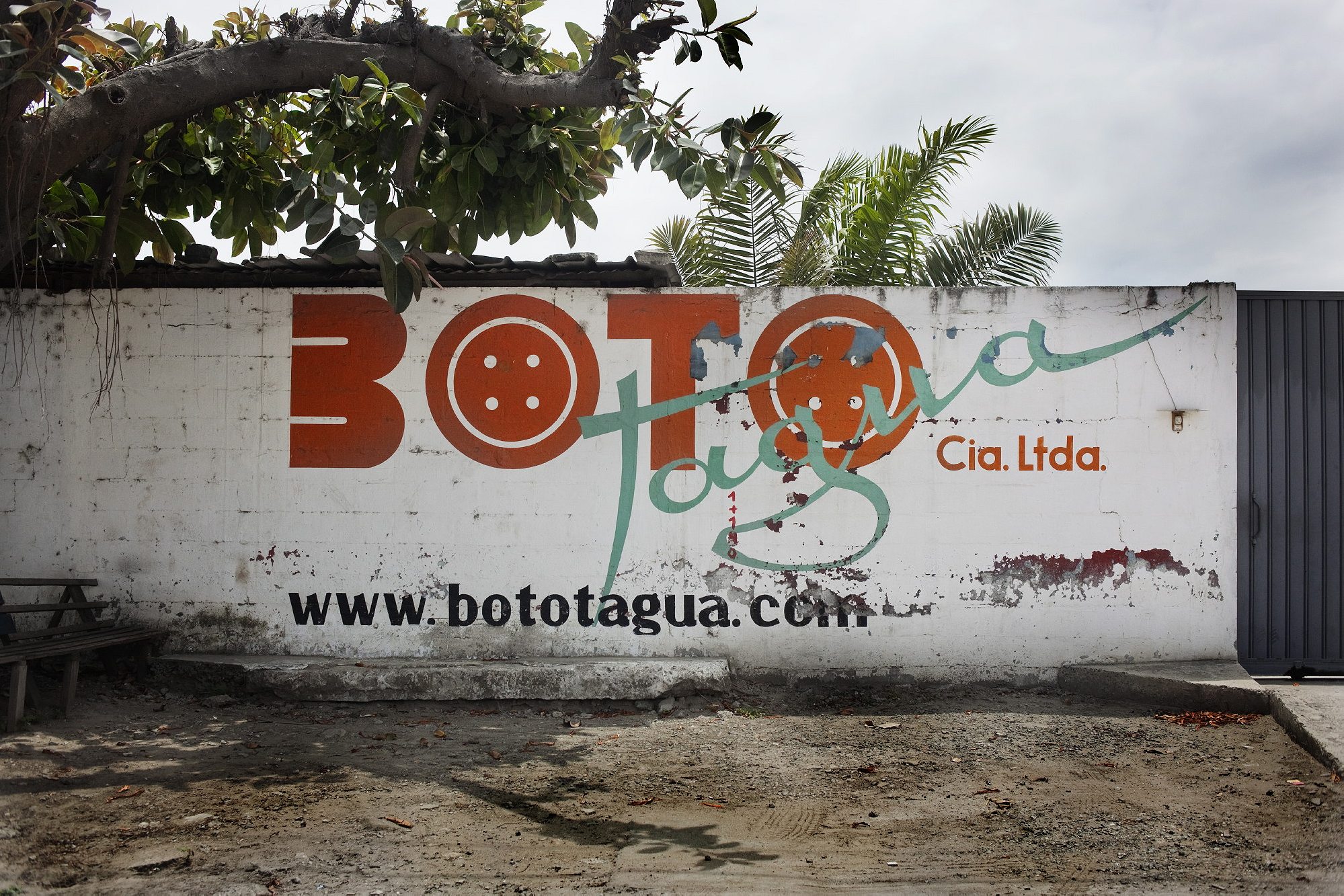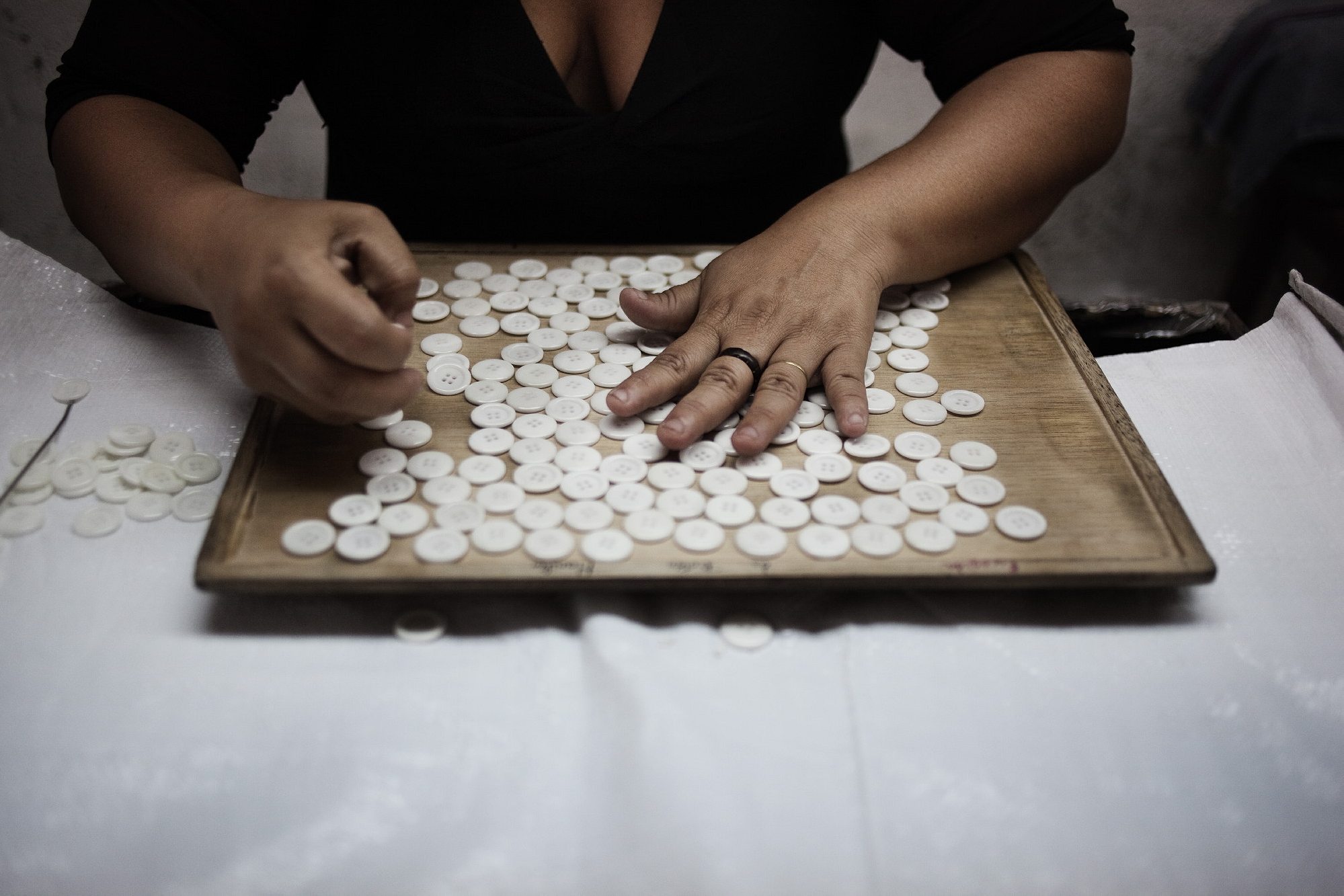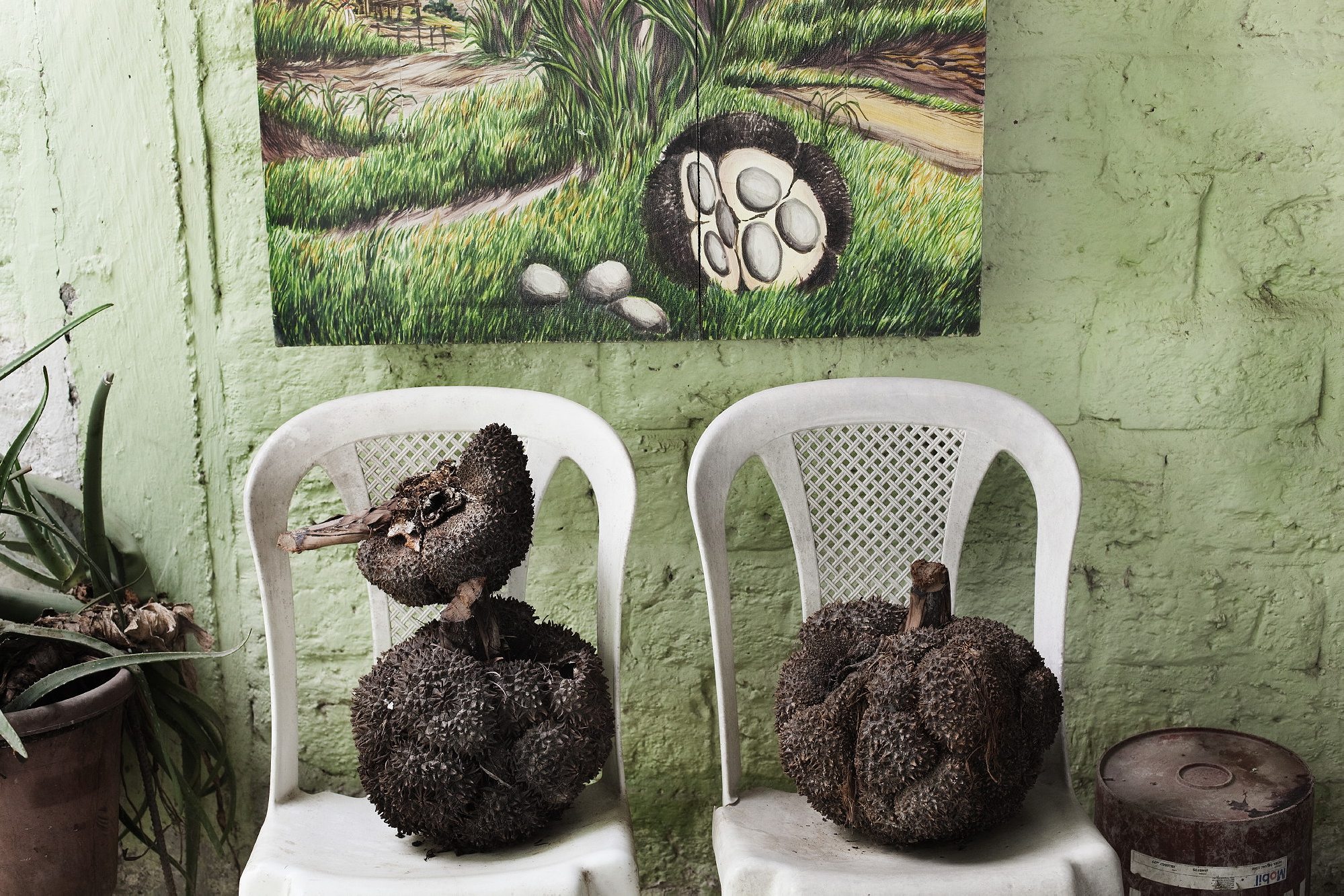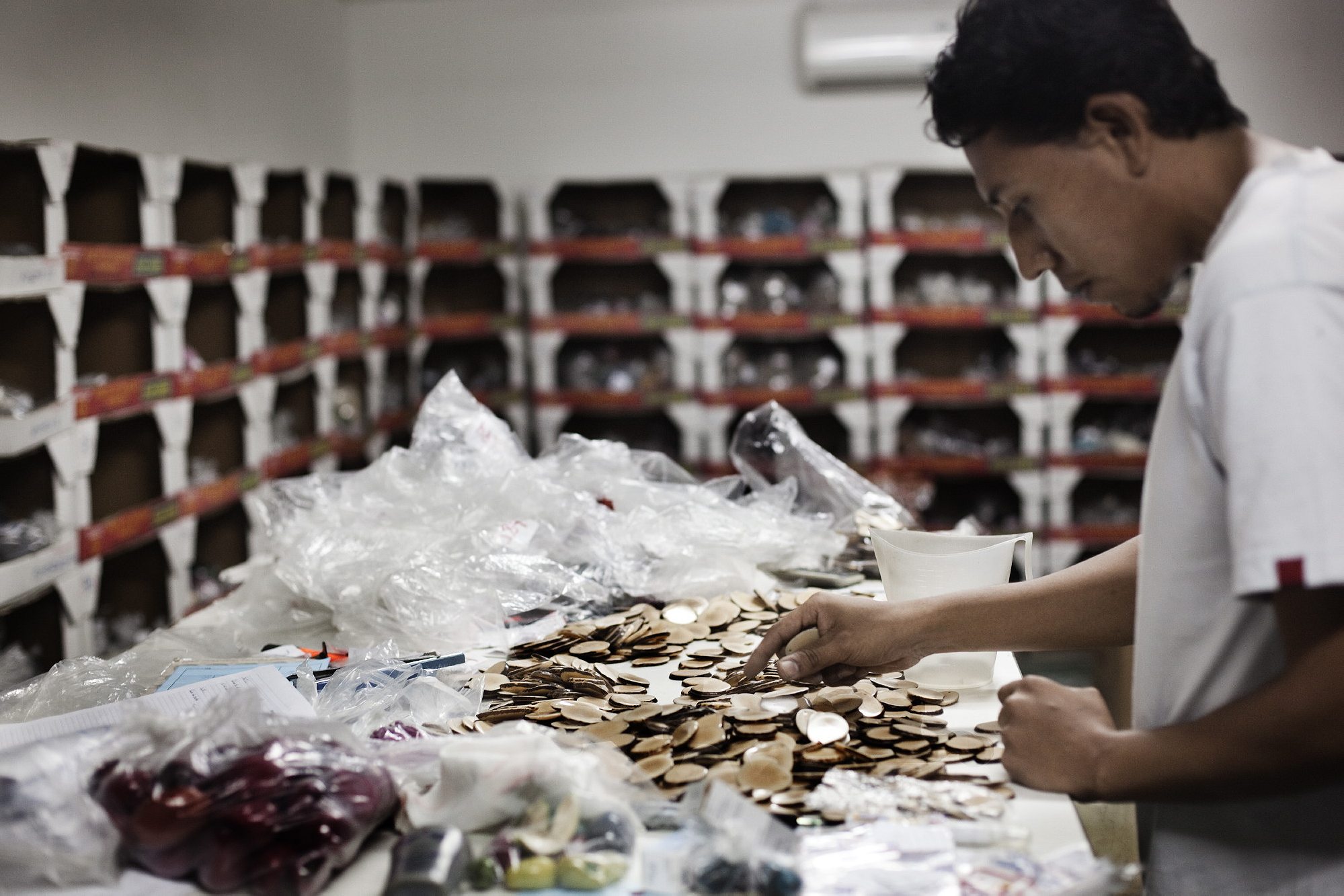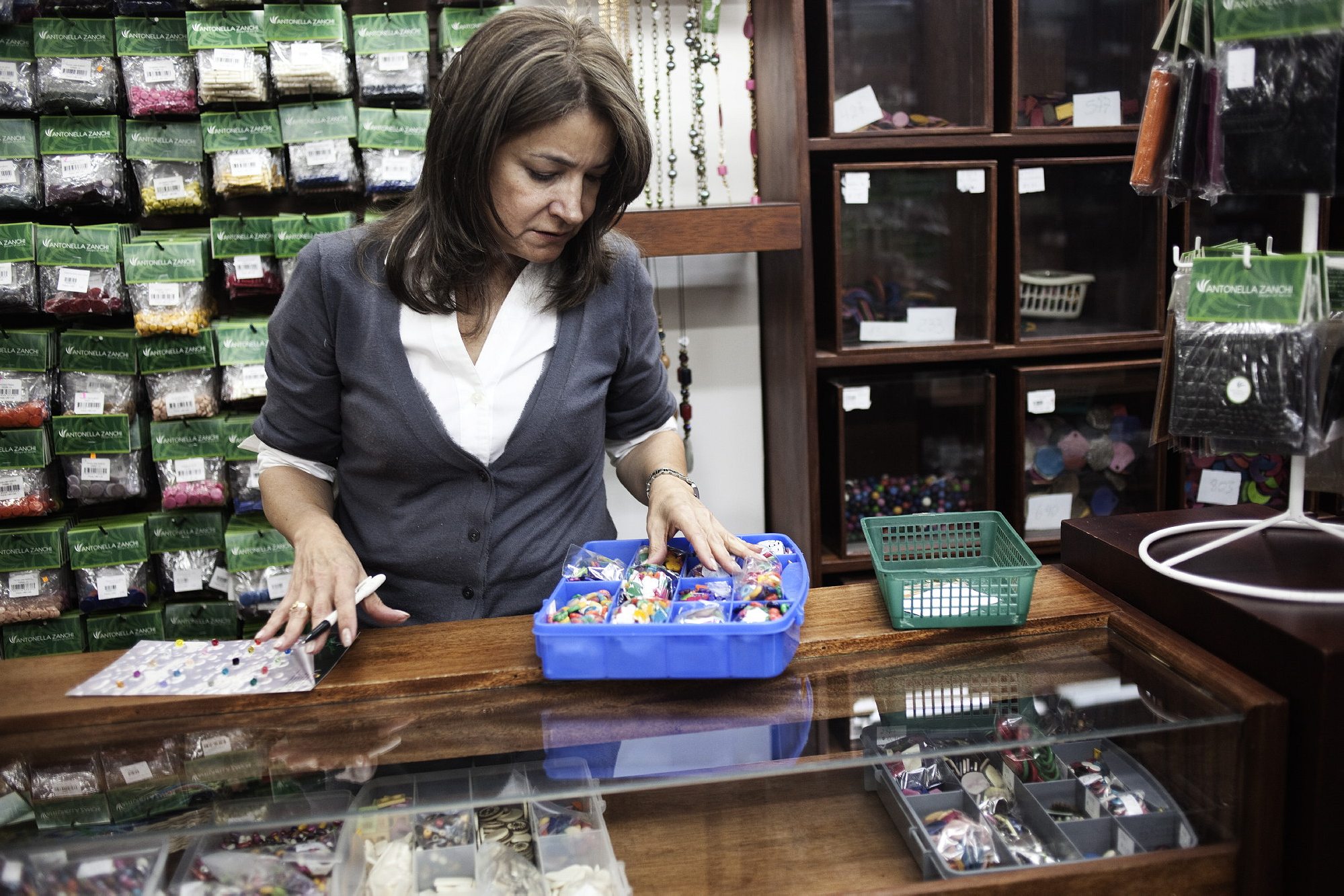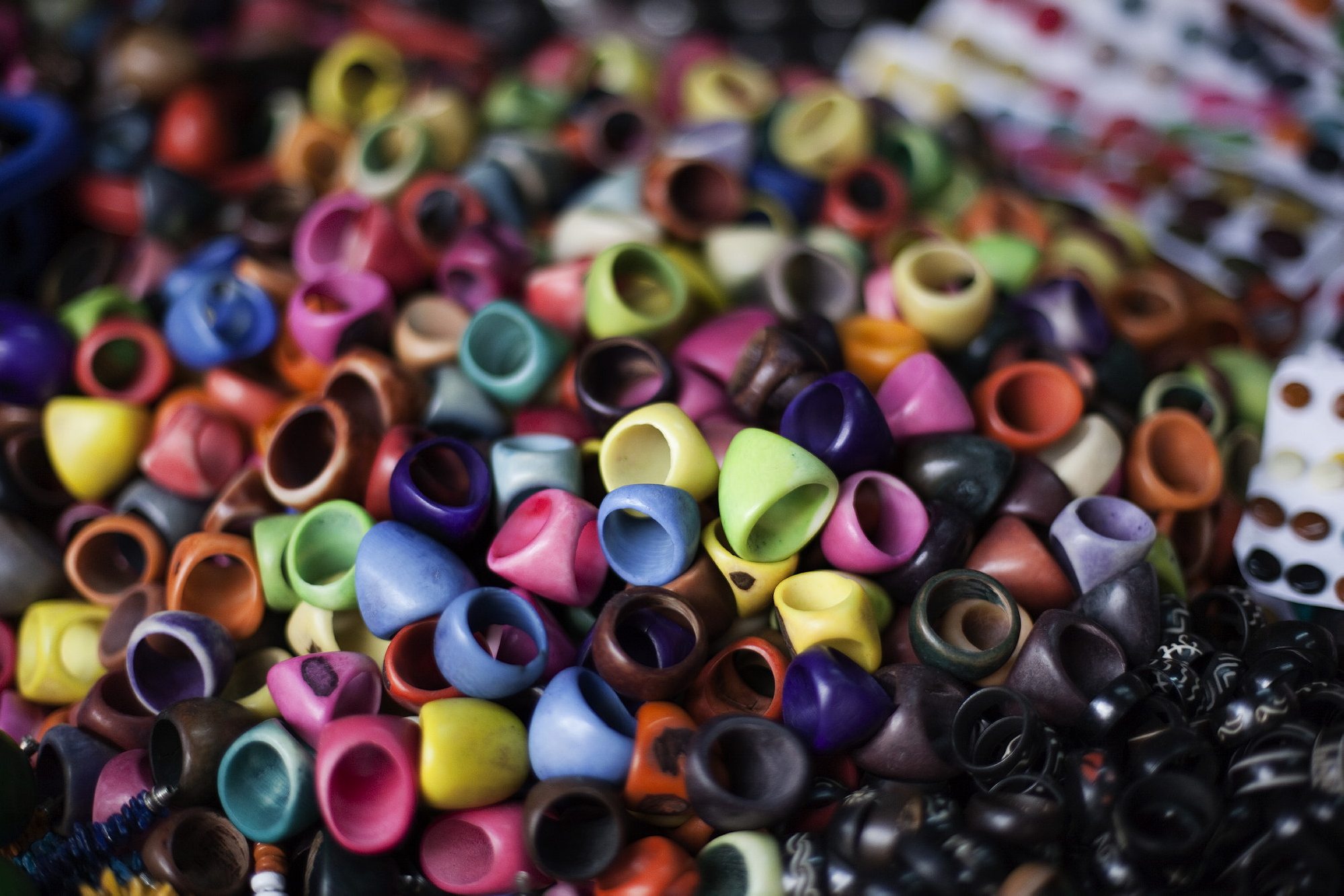An Italian photographer goes to Ecuador to track down ‘vegetable ivory,’ a plant that could one day replace elephant ivory in global markets.
Manta, Ecuador, calls itself the world capital of tuna, blessed to be alongside the nutrient-rich Humboldt Current that threads between its shores and the Galapagos Islands. But although the tuna still run strong in the eastern Pacific, over-harvesting and sustainability are constant preoccupations in the city. And there’s a far more sustainable export from the jungles near town, one that dates back to when the city was a pre-Columbian trading center for the Manta tribe: the ivory-like nut of tagua palm.
Italian photographer Machi di Pace documented the industry that surrounds Phytelephas aequatorialis, the tree that grows throughout northwestern Amazonia. The fruit of the palm looks similar to coconut but when it dries and hardens, it become white and compact like ivory. The genus name, Phytelephas, comes from the Greek for “Elephant tree.”

The similarity to ivory has some calling the tagua, which is harvested without harming the trees, a renewable stand-in for the spiralling global ivory trade, which leads to the death of an estimated 35,000 African elephants every year. And though it’s hard to say that tagua’s ‘vegetable ivory’ could ever be coveted like elephant or mammoth ivory, the fruit already supports many in Manta.
Factories and local artisans there manufacture buttons, jewelry, statuettes and chess pieces with tagua. Smaller ateliers do the same throughout the surrounding region of Manabi. Di Pace says that in a world of more eco-conscious consumers, there are hopes that tagua could fill a unique role: more organic than resin-based synthetic ivory, but without the ceaseless cruelty of elephant ivory.

